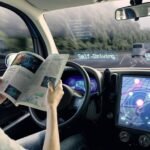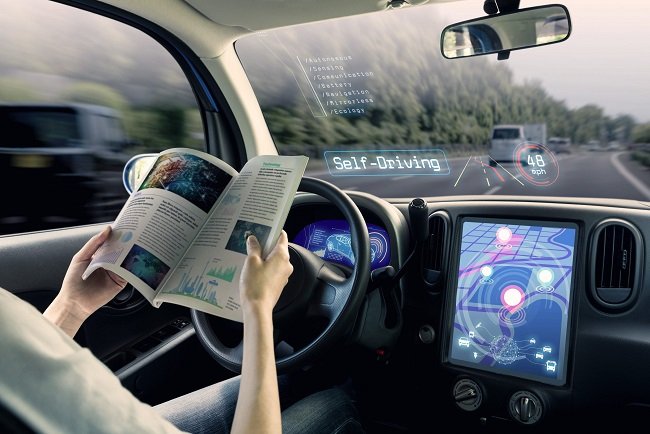The rise of Autonomous Vehicles (AVs) marks a revolutionary shift in transportation. Promising enhanced safety, efficiency and accessibility, self-driving technology is poised to reshape global mobility. However, with this innovation comes a host of challenges, particularly in ensuring safety and compliance. Steve Mehr, co-founder of Sweet James Accident Attorneys, recognizes that this partnership is essential to navigating the intersection of cutting-edge technology and public safety.
Ensuring the safety and reliability of autonomous vehicles requires a collaborative effort between automakers and regulatory agencies. Standardizing safety benchmarks, addressing cybersecurity risks, and refining legal frameworks are all critical components of this partnership. By working together, these stakeholders can create policies that foster innovation while maintaining public trust and accountability in the development and deployment of self-driving technology.
The Importance of Collaboration in Autonomous Vehicle Development
Autonomous vehicles rely on a combination of advanced sensors, Artificial Intelligence (AI) and real-time data analysis to navigate complex environments. The stakes are high; a single system failure could have catastrophic consequences. To mitigate risks, automakers and regulators must work together to:
Defined Safety Benchmarks: Establishing clear, consistent safety benchmarks ensures that AVs meet minimum safety requirements before hitting the road.
Standardized Testing Protocols: Unified testing methods allow for accurate assessments of vehicle performance under various conditions.
Public Trust: Transparent collaboration demonstrates a commitment to safety, encouraging public acceptance of self-driving technology.
Steve Mehr explains, “Self-driving cars are often viewed as the next major advance in transportation because of their potential to improve safety and convenience. But what’s frequently overlooked are the legal challenges when these cars are involved in accidents.” This statement highlights the critical interplay between technology and legal considerations, emphasizing the need for proactive regulatory measures.
Key Areas of Collaboration
1. Developing Safety Standards
Safety is paramount in autonomous vehicle development. Automakers and regulators collaborate to establish comprehensive standards covering aspects such as:
System Reliability: Ensuring that AV systems can operate safely in diverse scenarios, from urban streets to rural highways.
Sensor Calibration: Standardizing sensor accuracy to minimize risks related to misinterpreted data.
Fail-Safe Mechanisms: Incorporating redundancies to prevent accidents in the event of system failures.
Organizations such as the National Highway Traffic Safety Administration (NHTSA) in the United States and the European New Car Assessment Program (Euro NCAP) play pivotal roles in defining these benchmarks. Automakers, in turn, contribute technical expertise to ensure standards are both practical and robust.
2. Data Sharing for Improved Safety
Data is the lifeblood of autonomous vehicle development. Manufacturers and regulators collaborate on:
Incident Analysis: Sharing data from AV-related incidents helps identify vulnerabilities and refine safety protocols.
Scenario Simulations: Large-scale data sharing enables comprehensive testing of AV performance in diverse scenarios, including rare and extreme events.
Standardized Data Formats: Regulators and industry groups work to create standardized data formats, facilitating seamless information exchange.
Collaborative initiatives, such as the Partnership for Analytics Research in Traffic Safety (PARTS), exemplify how data sharing can accelerate improvements in autonomous technology.
3. Regulatory Compliance
Navigating the regulatory landscape is critical for automakers. Collaboration with regulatory bodies ensures:
Adherence to Local Laws: Each region has unique traffic laws and safety standards. Close coordination helps automakers adapt their systems to comply with local requirements.
Pre-Market Approvals: Regulators work with manufacturers during the development phase to identify potential compliance issues early, streamlining the approval process.
Ongoing Oversight: Post-market surveillance ensures that AVs remain compliant as software updates and modifications are implemented.
4. Cybersecurity and Privacy
As autonomous vehicles generate and process vast amounts of data, cybersecurity and privacy have become critical concerns. Automakers and regulators collaborate to:
Establish Cybersecurity Frameworks: Creating protocols to protect vehicles from hacking and data breaches.
Ensure Data Privacy: Complying with regulations such as the General Data Protection Regulation (GDPR) and the California Consumer Privacy Act (CCPA) to safeguard user information.
Respond to Threats: Developing rapid-response strategies to address emerging cybersecurity threats.
5. Public Communication and Education
Building public trust in autonomous vehicles requires transparent communication. Collaborative efforts focus on:
Educational Campaigns: Informing the public about how AVs work, their safety features and their potential benefits.
Clear Labelling: Providing clear and consistent information about vehicle capabilities and limitations to prevent misuse.
Community Engagement: Soliciting feedback from diverse stakeholders to address concerns and improve public perception.
Examples of Successful Collaboration
U.S. Department of Transportation (USDOT) Initiatives
The USDOT has partnered with leading automakers to develop the “Automated Vehicles Comprehensive Plan.” This initiative outlines strategies for integrating AVs into the transportation ecosystem while prioritizing safety and innovation. Through workshops, public consultations and pilot programs, the plan fosters a collaborative environment for AV development.
UNECE WP.29 Regulation
The United Nations Economic Commission for Europe (UNECE) has established the World Forum for Harmonization of Vehicle Regulations (WP.29). This forum brings together global stakeholders to create harmonized regulations for autonomous vehicles, promoting international consistency and reducing regulatory barriers.
Voluntary Safety Self-Assessments (VSSA)
In the U.S., automakers such as Waymo and General Motors participate in VSSA programs, voluntarily submitting detailed reports on their AV safety protocols. Regulators review these assessments, which are then made available to the public, enhancing transparency and accountability.
Challenges in Collaboration
While collaboration is essential, it is not without challenges. Automakers may be reluctant to share proprietary technology and data, fearing competitive disadvantages. Rapid technological advancements can outpace the development of regulatory frameworks, creating gaps in oversight. Differences in regional regulations can complicate efforts to establish universal standards. Additionally, incidents involving autonomous vehicles can erode public trust, emphasizing the need for proactive safety measures.
The Path Forward
To overcome these challenges, automakers and regulators must adopt innovative approaches, such as:
Public-Private Partnerships: Encouraging collaboration through initiatives that incentivize data sharing and joint research.
Dynamic Regulations: Developing adaptive regulatory frameworks that can evolve alongside technological advancements.
Standardization Efforts: Promoting international cooperation to harmonize standards and facilitate global adoption of autonomous vehicles.
Ethical Considerations: Addressing ethical dilemmas, such as decision-making in unavoidable accident scenarios, through interdisciplinary collaboration.
The development of autonomous vehicles represents a monumental technological leap, but it also demands unprecedented levels of collaboration between automakers and regulators. By working together to establish safety standards, promote transparency and address emerging challenges, these stakeholders can pave the way for a safer, more reliable future in transportation. As partnerships deepen and frameworks evolve, the autonomous vehicle industry will be better equipped to balance innovation with public safety, fostering widespread acceptance and trust in this transformative technology.








